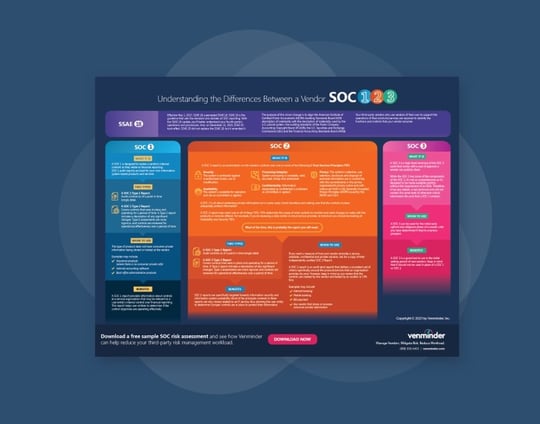An important stage within third-party risk management is collecting vendor due diligence to understand the effectiveness of the vendor’s controls. There are many different types of documents that can be reviewed and analyzed, including a SOC (system and organization controls) report. In this blog, we’ll cover who should be reviewing this type of document and what kind of knowledge is needed to do so.
Types of Qualified Experts to Review a Vendor SOC Report
It’s important to recognize that reviewing a SOC report is not a “check-the-box” activity. There are many different roles within an organization who may have the experience needed to properly analyze the data. The emphasis should be on a qualified expert or team of experts who has the knowledge and capabilities of reviewing a SOC report, rather than any specific certification that an individual might obtain.
Here are just a few examples of such experts that might be qualified to review a vendor SOC report:
- Chief Risk Officer
- Risk Analyst
- Chief Information Security Officer
- IT Manager or Director
- Security Analyst
- Security Systems Engineer
- Security Auditor
5 Areas of Knowledge Required When Reviewing a Vendor SOC Report
Reviewing a vendor’s SOC report is an important step within third-party risk management because it confirms whether the vendor’s controls are in place and effective in protecting data.
The expert who reviews a SOC report will need to be knowledgeable in several areas such as:
- Controls within the SOC report: The specific controls and complexity within a SOC report will vary, but the qualified expert should have knowledge on the details they’re reviewing, including the control objectives.
- Complementary User Entity Controls (CUEC): These are the controls that your organization (the user) must implement to ensure that the vendor’s controls are effective. If your organization fails to review and implement these controls, you’ll be at greater risk in your vendor relationship.
- Subservice organizations: It’s important to understand what vendors your vendors are using and who has access to your organization’s data.
- Testing: The goal of understanding this area in a SOC report is to ensure that the vendor has tested the appropriate controls. When testing reveals any exceptions, they should be noted for their impact to your organization. You can then determine if there are any possible actions to be taken if the testing results aren’t adequate. It’s also common to have management respond in the event of an exception by acknowledging the finding and stating the remediating activities that will be performed to ensure it doesn’t happen again.
- Gaps and weaknesses: A knowledgeable expert will be able to identify the gaps and any potential weaknesses such as an auditor’s qualified or adverse opinion. By addressing these gaps early on, you’ll be in a better position to protect your organization from data breaches and other cybersecurity threats.
Reviewing a vendor SOC report can often be a complex process with many intricate details. For many organizations and industries, this review is a regulatory requirement, so it’s recommended that you employ the expertise of an appropriate individual who understands how best to analyze it.





.gif?width=1920&name=Sample-Graphic-Animation%20(1).gif)



